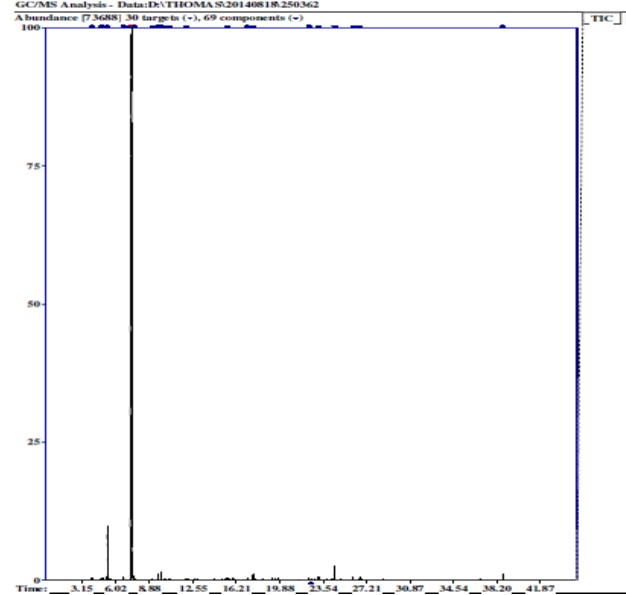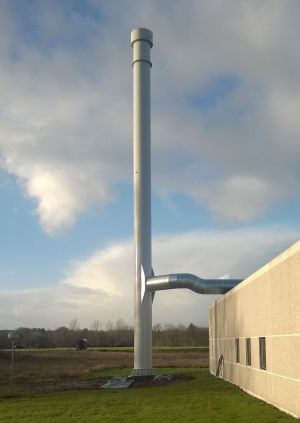How To Clean Acrylic After Laser Cutting
Environmental and health impacts from the fumes when laser cutting acrylic
BackgroundLaser cutting of acrylic sheets (Plexiglas) is a widely-used process for the production of POP displays, signage, aquariums, greenhouses, electronic instruments.
Laser cutting acrylic is developing a clear smoke with distinct sweet smell. At Induflex it is removed from production with powerful suction in the laser machines. The fumes are filtered mechanically and discharged through a chimney.
Induflex have been laser cutting acrylic since 1998 and today has 6 laser cutting machines. This makes Induflex one of the largest manufacturers in Europe. At the same time is Induflex geographically located in a combined industrial and residential area, which requires Induflex to comply with the strictest environmental requirements possible.
Due to the large production and location Induflex was in 2013 required to document that all environmental requirements to odors and concentrations was complied.
The first studies showed that Induflex exceeded the limit values for both odor and concentration in the immediate area and Induflex was required to resolve the issue before October, 2014.
Induflex have therefore investigated the possibility of purification of the fumes from laser cutting acrylic and, in the interests of employees and neighbors, the health and environmental impacts.
Sources
Sources used are marked with [] and can be downloaded at the bottom of this page. They are all in Danish, but they refer to other English sources.
Chemical composition of acrylic It is disclosed as an organic substance, because it contains carbon (C). The carbon is bonded to oxygen and hydrogen. MMA is produced from oil and natural gas by a few large manufacturers all over the world. From there the MMA is distributed to manufacturers of acrylic sheets, rods and granules. Through a chemical process the MMA is organized into long molecule chains and becomes PMMA (acrylic). The same substance, but now a clear solid material:
Acrylic consisting of methyl methacrylate (MMA), which is a colorless liquid having the chemical formula:
The composition of smoke from acrylic laser cutting The samples were analyzed at the University of Copenhagen. The result is shown below.
In Induflex's feasibility study on flue gas treatment Induflex was in contact with the company "Infuser Aps" which in August 2014 took samples of the smoke from the lasers at Induflex.

The fumes from the laser cutting of acrylic consists mainly of MMA.
Infuser conclude in their study [4], that the smoke consists mainly of one substance - MMA and therefore is a prime candidate for treatment in their installation.
Overall Human Health Effects of MMA Acrylic can be recycled, but since a considerable percentage is used in common household products it ends up in waste incineration or junkyards. Acrylic is widely used in the food industry. Both cast and extruded acrylic is, by the EU, approved for direct contact with food. Furthermore, it is used by dentists and is part of surgical implants, including bone cement. The authorization to use acrylic and MMA with both food and implants means that any adverse effects are studied carefully. The Danish health authorities has included MMA in the assessment of different health effects [1]. The assessment concludes that MMA with prolonged direct contact on the skin can cause allergies and discomfort in the respiratory tract when inhaled. However, that is at high concentrations. In low concentrations, it has no known harmful effects.
Acrylic placed outside is highly resistant to the elements. It will only slowly degrade and can remain outside for decades. In contrast, MMA is highly unstable when exposed to oxygen and UV radiation. After 7 hours, half has degraded [1]. MMA will eventually degrade to carbon dioxide and water.
Environmental impact during manufacturing Altuglas emit MMA as wastewater in a quantity that requires an environmental permit. The biological effects of MMA has therefore been investigated by the company "Hedeselskabet"[2]. The report concludes that the bacteria in sewer will not be hampered by emissions and half-life of MMA in the sludge is 59 hours. Based on the report, Altuglas today has permit to discharge diluted MMA without prior purification. MMA fumes from the exhaust at Altuglas are today degraded in their own incinerators. The report from the Danish Health Authorities [1] conclude that the potential for bioaccumulated is very low and will not likely to cause damage to sewage plants. MMA has a sweet fruity odor that can be smelled in small amounts. We assess the concentrations of 0.05 ppm may can be noticed. The limit for MMA in a production such as Induflex is 480 times higher, 24 ppm. However, in a production, that will never occur. It would be unbearable. The report from the Danish Health Authorities contains results from animal tests made with MMA concentrations well above the limit. It concluded "In humans, there are no symptoms of serious health effects from long-term inhalation of up to 50 ppm" [1]. It is estimated that a daily, continuous lifelong inhalation of 0.17 ppm MMA has no significant risk of harm. There are no indications that it damaging to inhale and it degrades quickly and does not accumulate in organisms [1].
In Denmark, the largest manufacturer of acrylic is Altuglas in Brønderslev (formerly Repsol). In the production, they handle large amounts of MMA. Both as liquid and vapor.
Based on the report from Infuser Induflex has in the investigation primarily looked at the influence of MMA and any health problems.
Removing MMA from the fumes when laser cutting acrylic Because MMA is easily degradable, there are several treatment methods that may work: Impact on the environment and the surroundings from laser cutting acrylic at the Induflex facility Induflex has 6 lasers, which are all modified with much stronger suction than delivered by the manufacturer. The powerful suction means that even with full load there is no smell of acrylic (MMA) in the laser department. It also means that Induflex emit air with lower concentrations of MMA than other similar companies. An accredited study by Force Technology [3] shows that Induflex, at full load, without a chimney, with the right wind direction, will affect the nearest neighbor with 0.11 ppm MMA. That is below the level considered safe by lifelong exposure. On average it would be far below 0.11 ppm. Odour Impact is also below the limits. Sources
MMA is NOT on the Danish Health Authorities list of unwanted substances and allows emissions of MMA of 2000 grams/h before a facility has to start cleaning. Induflex emit far below that. It is therefore only odor and concentration among neighbors that determine the necessary actions.
Active carbon itself is also categorized as hazardous waste, which must be disposed in an incinerator. The result is that an attempt to remove a material that is (MMA) in the given concentration is safe and is rapidly degraded, with one that is environmentally problematic. The problem is solved by creating a larger waste problem somewhere else.
Induflex got in 2014 permission to build a 20-meter-high chimney.
Induflex department for laser cutting is estimated to consist of 95% acrylic. The remainder comes from the protective foil consisting of polyethylene (turns into water and C02 by laser cutting), among others. 
20-meter chimney. Estimated reduction of MMA concentration at the neighbors by a factor of 15.
[1] Miljøstyrelsen, Øget videnberedskab om kemiske stoffer i plast..., side 258-266.
[2] Hedeselskabet, Bionedbrydelighed af spildevand fra Repsol Brønderslev.
[3] Force Technology, Afkast fra laserskæring i acrylplast...
[4] Infuser - Teknisk undersøgelse
| Processing | |
| Machining | |
| Laser cutting | |
| Bonding | |
| Bending | |
| Polishing | |
| Engraving | |
| Thermoforming | |
| Properties | |
| The use of Acrylic | |
| Production of sheets and profiles | |
| Cast versus extruded acrylic | |
| Chemical resistance | |
| Structural properties | |
| Dimensional stability | |
| Cleaning | |
| Fire | |
| Temperature | |
| Tension and notch | |
| Printing on acrylic | |
| Acrylic versus glass | |
| Acrylic versus polycarbonate | |
| Trade names for acrylic | |
| Environmental impacts of acrylics |
| Q&A | |
| how do I get acrylic items cheaply? | |
| What is tolerance? | |
| Where can acrylic be bought? | |
| How big is the heat expansion of acrylic? |
How To Clean Acrylic After Laser Cutting
Source: https://www.pmma.dk/Acryl_miljopaavirkning.aspx?Lang=en-GB
Posted by: lewisthened.blogspot.com

0 Response to "How To Clean Acrylic After Laser Cutting"
Post a Comment